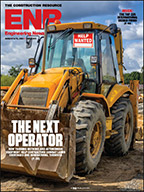The most difficult part of moving to a senior health-care community is making the decision to live there. When designing for the wellness and health of seniors, architects need to appeal not only to seniors but also to their adult children.
The draw has to be not only what’s in the building but also what the community has to offer. Generally, half the residents in a facility have been in the community for a long period of time. The remaining residents are “out-of-towners” brought in by adult children to be close to them. They may also be people who have always wanted to live in that type of community.
The average age today for someone entering these facilities is approximately 84 years of age.
Statistics say that one million boomers (born between 1946 and 1964) will live past 100 years. This generation is still 20 years from entering these facilities based on current average entry age. With the advances in healthcare it is possible that the entry age could reach 90 in the future.
As an architect who designs senior communities, I have the opportunity to design a facility that I would like to live in when the time is right. I have the opportunity to design a facility that I would like to live in when the time is right. Occasionally, when I see one I think, “This wouldn’t be bad in my golden years.” I’m in my mid-50’s and still extremely healthy and active and have not found one that appeals to my healthy lifestyle. If I’m feeling disappointed with the choices, how will potential residents feel?
When the time comes and I want to retain my independence and lifestyle but no longer want the responsibility of home ownership, I want a facility that appeals to my standard of living.
Social and Outdoor Spaces Let’s talk about social spaces. The design of the building and the programs need to accommodate various social activities of residents without forcing them to participate. The idea of residents staying in their room is detrimental to both their mental and physical well-being and also creates a strain on staffing. Offering enough activities to keep them involved in events, or better yet in organizing them, will keep them socially active.
On the facility side, incorporating spaces that cater to specific activities can be expensive and underutilizes the building. Spaces needed to be designed to accommodate multiple activities.
Therefore, the design should have the capacity for adequate storage, proper infrastructure and creative layouts. Even food service needs to provide choice of menu and venue. An alternate solution could be providing transportation to locations that allow access to certain activities and services. The issue here is the facility needs to own and maintain a vehicle that accommodates this amenity. The idea is to provide a variety of options with a limited budget.
Access to the outdoors for everyday life such as dining, relaxing, gardening, taking a walk or just sitting on the porch is an element that shouldn’t be ignored. In their own homes, individuals experienced these pleasures daily. No matter where you are building your facility, outdoor life should be reflected in the design.
Resort Quality Equally important is the design of personal living spaces based on the type of service provided for various acuity levels. For instance, independent living units will have far more personal space than skilled nursing rooms. Units should be generous enough to allow residents to have private social interaction, which also promotes wellness. The character of the interior design needs to be consistent to ease the individual’s journey through the levels of care.
However, interior finishes need to meet the intent of health codes as well as meeting the needs of maintenance and housekeeping at various levels of care.
Does a destination hotel come to mind at this point? The more successful facilities feel like a resort rather than a utilitarian facility. This is especially true where choice is abundant. What message are you sending to the community by sacrificing the quality and lifestyle elements of senior environments in rural areas? Through attrition, you still need to market the facility, which is even more difficult in less populated areas.
There is a line you cross when going through a facility from residential to institutional. The entry of the building can appear to be a resort and then downgrade to residential but should never cross the line to institutional.
Wellness Elements Wellness as the component of the design without being institutional would include:
1. Unit design allowing adequate space for comfortable living
2. Flexible multi-purpose rooms
3. Space/volume of building, but not cavernous
4. Natural or subtle interiors – comfortable, soothing, tasteful, but not gaudy
5. Stairs that are inviting and easily accessed
6. Therapy pools
7. Restaurants or alternate dining venues and styles
8. Adequate ventilation – controlling offensive odors
9. Exterior sidewalks with activity nodes
10. Connectivity to community/integration into community
11. Facility should be within the town, not on the outskirts
12. Freedom of movement throughout interior and exterior
13. Move staff out of their offices and into the facility
14. Keep staff engaged with each other and their charges
Staff Support The facility needs to support staff efforts without too much redundancy of space that can break the budget. A comfortable, quiet break room should be provided that includes lockers, bathrooms, showers and a small kitchenette with access to the outdoors. If the site allows, place staff parking near a separate entrance.
Many providers have facilities in multiple communities throughout the country. While achieving the goals of a home-like facility, a designer must be cognizant of the different codes in various jurisdictions. It is important to work with the owner/operator to understand the licensing requirements of the facilities, which could be more stringent than building codes.
A knowledgeable design team is important for the success of the project. The design team must be creative, flexible and listen to understand the services and programs that the owner/operator is providing without injecting their design signature into the project. Lifestyles change, programs change, and the design of buildings must accommodate a maturing generation with choices and dignity.
Gary Prager, a managing partner at VTBS Architects, has been involved in the design of senior health-care facilities throughout the country for over 20 years. He can be reached at gprager@vtbs.com or 303-594-0600.



Post a comment to this article
Report Abusive Comment